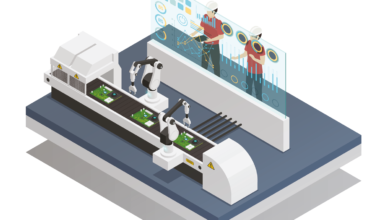Differences Between ERP and APS from the Perspective of Planning

Why ERP?
ERP systems are a solution set designed to manage business activities of different business processes at the simplest level. Here, different business processes have their own individual goals, and these processes also come together to serve a common purpose. The ultimate goal mentioned here is to ensure the continuity of the organization.
From this perspective, while it may be possible for business processes to improve their internal workings over time, it will not escape the careful analysis of someone who recognizes that organizations face greater challenges when it comes to coordinating processes. The main reason for this challenge is the integrated and seamless transmission and interpretation of data/information produced by one business process to other departments.
At this very point, accounting, production, supply chain, R&D, and many other departments work together to ensure data/information integrity, which is the first requirement for coordinating processes, and ERP solutions have been derived and shaped according to the need.
ERP and Operations Management
When it comes to operations management, if our goal is to ensure data integrity and simplicity, then ERP will serve us well. Entering realized productions into the system, ensuring stock integrity, and developing relatively easier projections based on available stocks and orders are exactly what ERP is perfect for.
However, when it comes to quickly reacting to changes, developing special planning algorithms for products, customers, production lines, orders, and changing circumstances, the likelihood of ERP solutions meeting the needs decreases as the data in the organization becomes more complex. Because as the product and production become more complex, the expectations from operational planning increase.
Operational Planning and APS
It’s worth mentioning the acronym APS. Advanced Planning and Scheduling are the initials of Advanced Planning and Scheduling. They are also known as APO. In this case, the words Advanced Planning and Optimization have been used.
Based on what has been mentioned so far, summarizing the expectations of organizations from operational planning regardless of the sector, we reach the following conclusions.
- Timely fulfillment of orders
2. Dealing with productivity and cost pressures while fulfilling orders
3. Expectation not to miss new orders
4. Need to respond quickly to unplanned interruptions in different production resources
Why Should I Use APS?
In light of general expectations, we can summarize the answers to why we should use APS software as follows. Let’s go over the answers again.
1. Operational Data Quality Control: The best result of a system is 100% related to the quality of the data it takes over. In this regard, APS software ensures that the results are shared with the user after the data verification process, thus ensuring that the data quality is at the highest level. Thus, the simplest data set is transferred to the system in the most consistent way with each other. APS shares with users with simple and purposeful warning messages exactly which data property needs to be changed. For example, sharing with the user that the product tree information for product A code is missing prevents the user from scanning the entire data pool and wasting time.
2. Flexible and Fast Operation for Complex Data Structures: In APS software, the management of data changes is done with the in-memory structure of the APS platform. Thus, since it is not necessary to reflect every change to the database, the performance loss is minimized.
3. Advanced Scenario Management: Different scenarios can be prepared for each data change, making it easier to manage different scenarios. For example, changes in production times and revisions of order sequencing, manipulation of supplier lead times can be tracked to improve delivery performance and efficiency. The mentioned changes can be made individually or together, creating very different user scenarios, and these scenarios can be compared.
4. Integrated Performance Management: APS users can create more integrated performance indicators by combining operational KPIs in sub-processes.
5. Resource Constraint-Based Scheduling: Orders can be prioritized and scheduled taking into account priorities and constraints on production lines. Special schedules can be prepared to maximize or minimize different KPIs. Algorithms suitable for the system can be quickly built with its parametric structure. In addition, schedules can be revised very flexibly according to new situations. Since APS software works according to material requirements planning (MRP), capacity, and resource constraints, it ensures that the factory is more synchronized with suppliers and prevents making fictitious plans based on assumptions.
6. Integrated Production and Order Management: APS software will enable users to see how changes in supplier-originated, production, and order sequencing affect the quantities to be shipped and the timing of orders long before shipment, thanks to global and dynamic pegging features. This will allow taking additional measures in advance to increase order performance.
7. Improvement in Order Delivery Performance with Alternative Resource Management: APS software can offer plan options to the user by activating alternative routes when orders cannot be met with main production routes. Despite all these measures, if the number of late orders is high, it contributes to proactive order management by sharing information with users about which orders will not be met, which order items, and why.
8. Stock and Resource Management: With APS software, it will be possible to see instantly how much excess material stock changing quantities of orders will create or, conversely, how much additional machine and operator need it will cause in case of the opposite situation.





